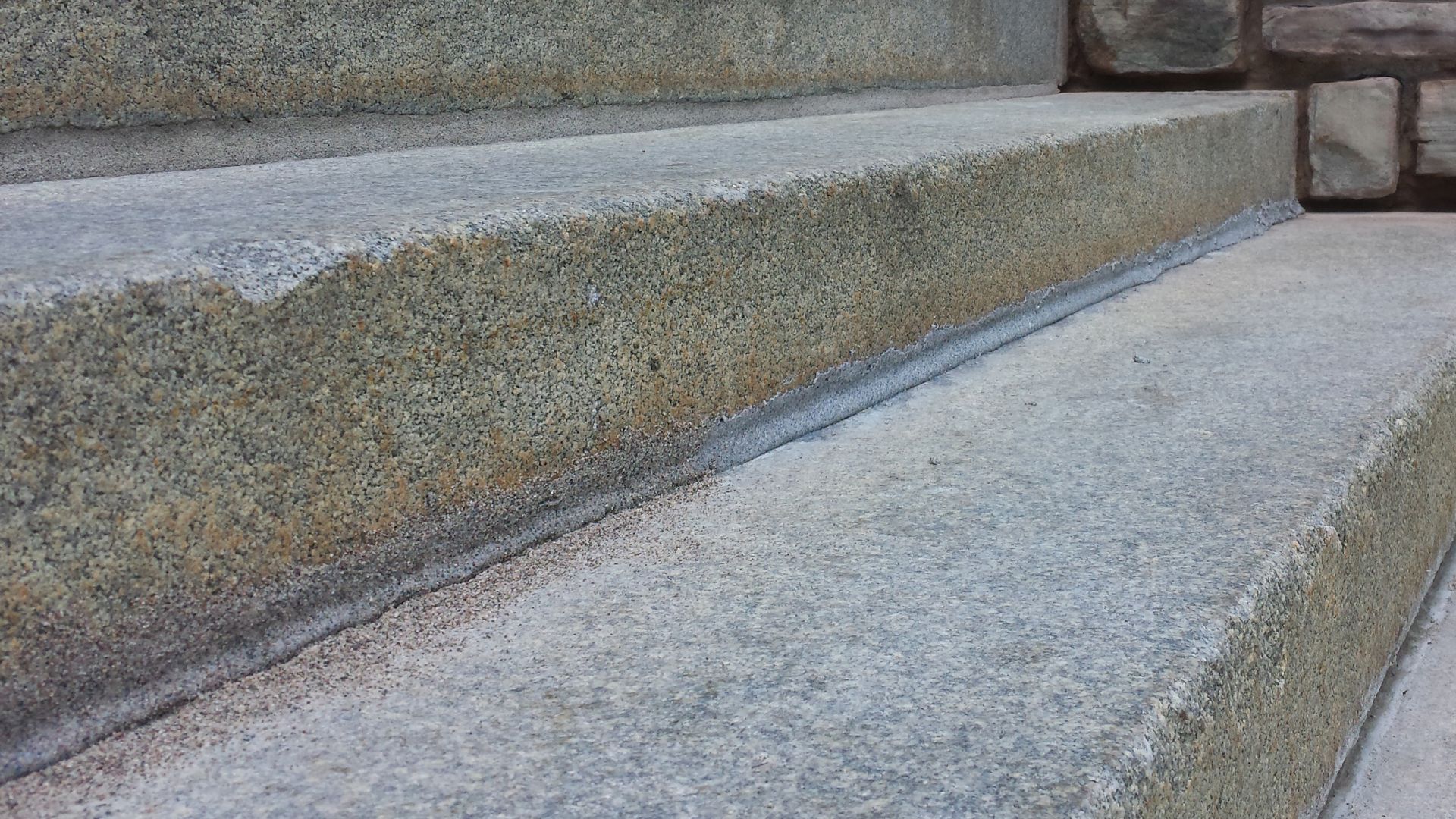REPOINTING STAIRS
MAIN CHARACTERISTICS
■ Exposure to de-icing salts;
■ Often made of granite stones;
■ Horizontal surface – high exposure to humidity.
There are three key reasons why stairs can present problems in masonry applications:
1. Stairs are generally made from granite stone. Granite is a very dense material which makes it difficult to absorb water contained in fresh mortar. Because of this, the bond between mortar and masonry could be affected. After slight movements in the stair, it is not uncommon to see cracks appear between the mortar and masonry unit after only a few months.
2. De-icing salts can lead to the accelerated deterioration of masonry joints.
3. Following freeze-thaw cycles, granite stairs are often subjected to large lateral movements.
Therefore, the desired qualities of a mortar in this application are:
1. Adhesion to the support in order to limit cracks;
2. Resistance to de-icing salts.
Unfortunately, these are properties that are rarely found within the conventional mortars.
TIP
In order to help with this type of work, one can consider turning to a more modern material, such as polyurethane. Mortars made from polyurethane - two components - offer great adhesion to the support, are resistant to de-icing salts and are UV rays. In addition, some products, such as Reconstec MF, offer all the appearance of a conventional mortar.
Recommendations
■ Granite stairs: Reconstec MF
■ Limestone stairs: Reconstec MF or King® 2-1-9

